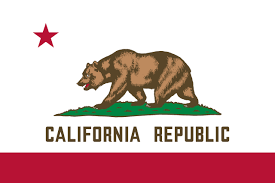CVC 21655.8: High Occupancy Vehicle (HOV) Lanes and Toll Facilities
CVC 21655.8 is a section of the California Vehicle Code that pertains to High Occupancy Vehicle (HOV) lanes and their use in conjunction with toll facilities. This law addresses the rules and regulations for vehicles using HOV lanes and the tolls associated with accessing these lanes, particularly during specific hours.
Here are the key points of CVC 21655.8:
-
HOV Lanes: HOV lanes, often referred to as carpool lanes or diamond lanes, are dedicated lanes on certain California highways reserved for vehicles with a minimum number of occupants. Typically, these lanes are designated for vehicles with two or more occupants, but the specific occupancy requirement may vary.
-
Toll Facilities: In some cases, HOV lanes may also function as toll facilities during specific hours. These are commonly known as High Occupancy Toll (HOT) lanes. Drivers can use these lanes by paying a toll, even if they do not meet the usual occupancy requirements.
-
Exemptions: Certain vehicles are exempt from occupancy requirements and tolls in HOV lanes. Examples of exempt vehicles may include clean energy vehicles with special decals, transit buses, emergency vehicles, and certain low-emission vehicles.
-
Hours of Operation: CVC 21655.8 specifies the hours of operation for HOV lanes that also function as toll facilities. These hours dictate when the occupancy requirements apply and when tolls are in effect. Outside of these hours, regular vehicles may use the HOV lanes without meeting the occupancy requirements or paying tolls.
-
Enforcement: Law enforcement agencies are responsible for enforcing the rules of HOV lanes and toll facilities. Violations can result in penalties, including fines.
Why CVC 21655.8 Matters:
CVC 21655.8 is significant for several reasons:
-
Traffic Management: HOV lanes are designed to promote carpooling and reduce congestion on California highways. By allowing vehicles with multiple occupants or those willing to pay a toll to use these lanes, traffic flow can be improved.
-
Environmental Impact: Encouraging carpooling and the use of clean energy vehicles in HOV lanes can help reduce emissions and promote environmental conservation.
-
Efficient Transportation: HOT lanes provide an option for solo drivers to access faster, less congested lanes during peak hours, contributing to more efficient transportation.
-
Legal Compliance: Adhering to CVC 21655.8 is a legal requirement. Violating these regulations, such as using HOV lanes without meeting occupancy requirements or during toll hours without paying, can result in penalties.
Penalties for Violation:
Penalties for violating CVC 21655.8 can vary depending on the specific circumstances, local jurisdiction, and the severity of the violation. Common penalties may include fines and potential points on a driver's record.
In Conclusion:
CVC 21655.8 addresses the use of HOV lanes and toll facilities in California, with the aim of improving traffic flow, reducing congestion, and promoting efficient and environmentally friendly transportation options. Whether you're carpooling, driving a clean energy vehicle, or using HOT lanes during toll hours, understanding and adhering to the regulations outlined in CVC 21655.8 is essential for responsible and lawful driving on California's highways.

DontPayTickets.com
Fight Back California Traffic Violations and Tickets

